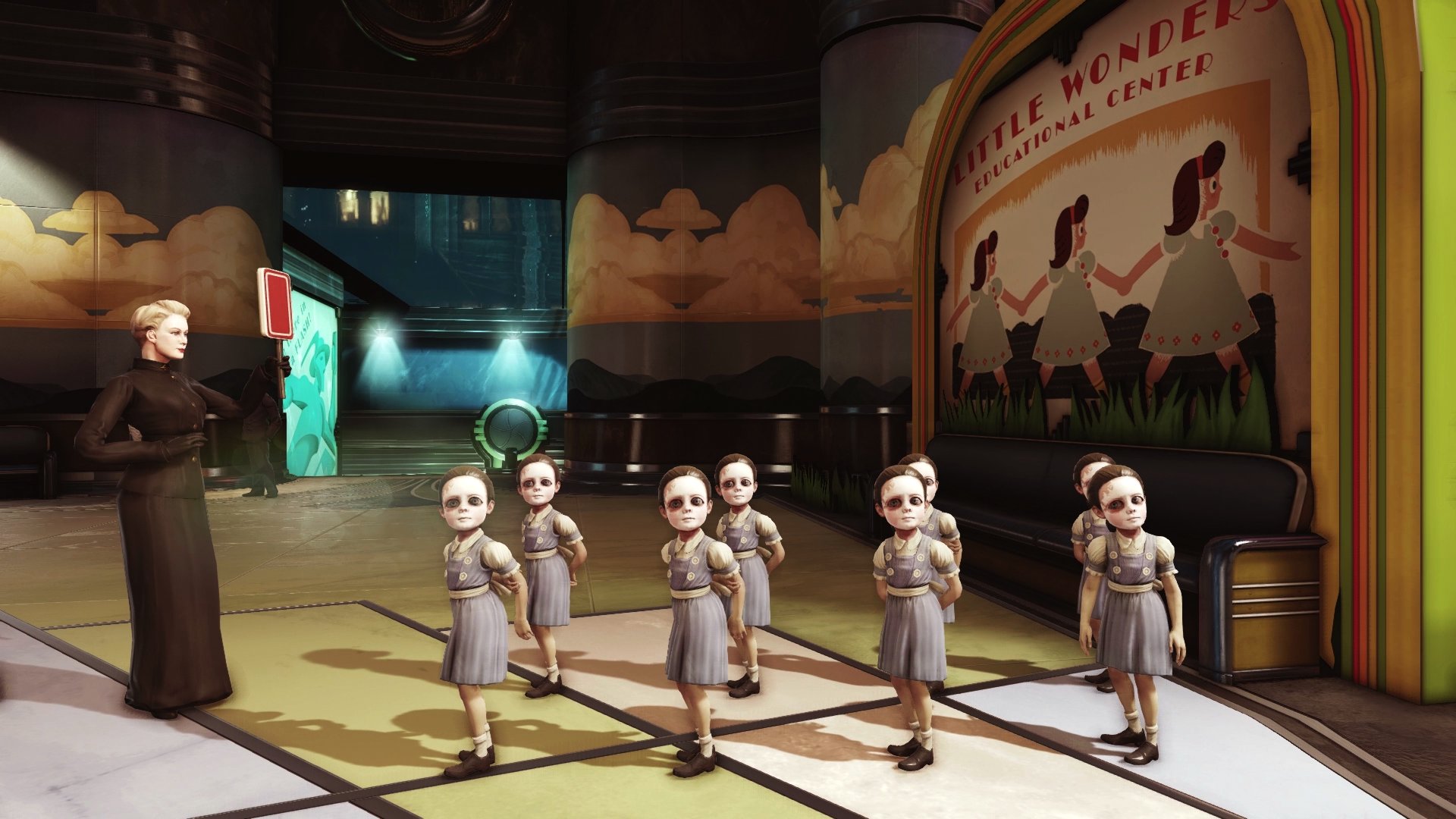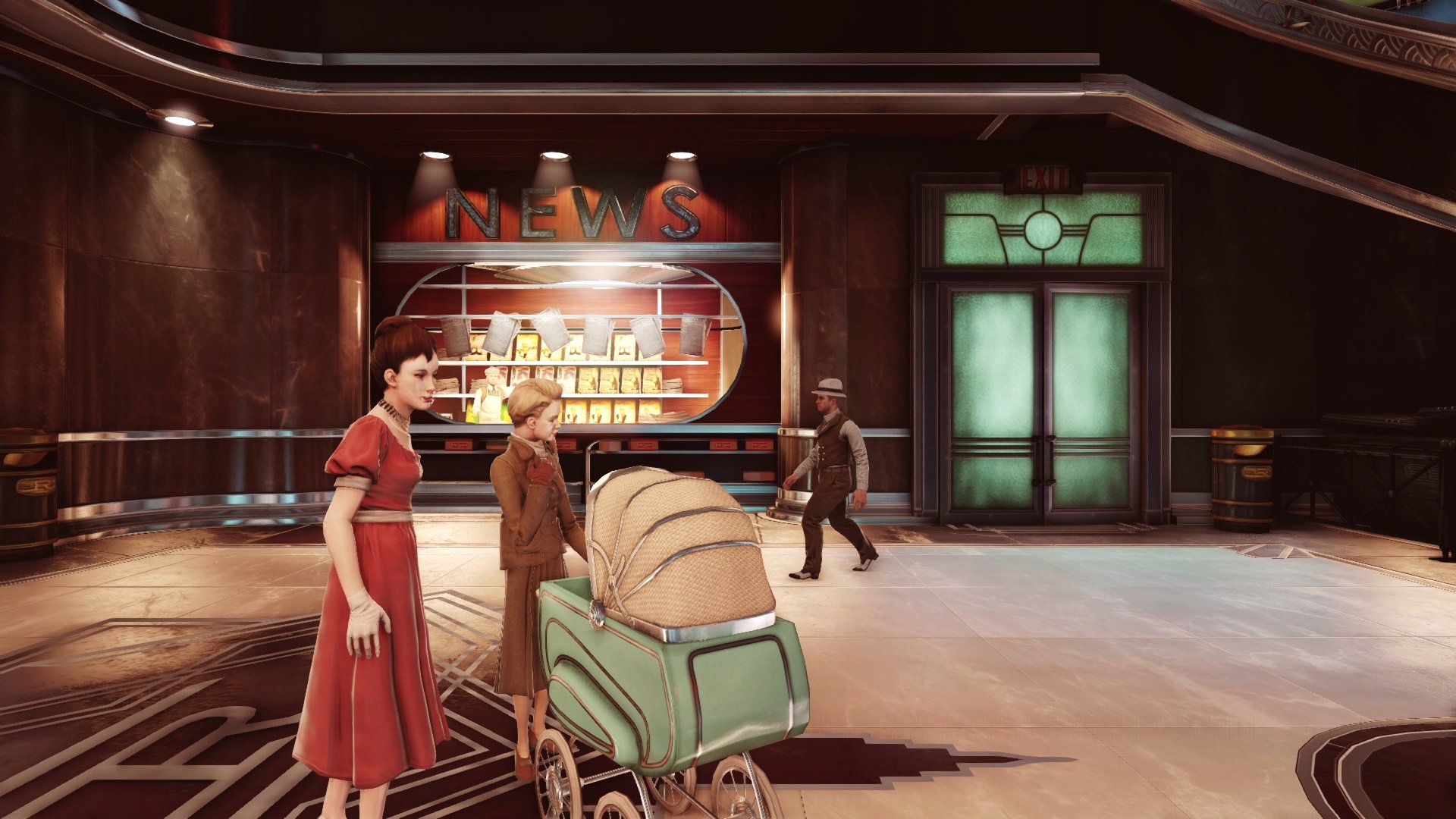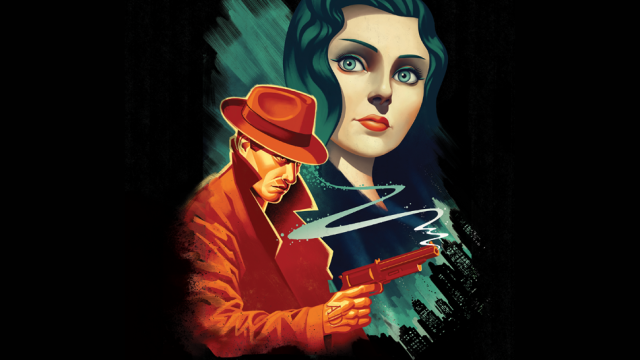Even though he just announced DLC that will bring players back to the iconic undersea metropolis of Rapture, Ken Levine says he doesn’t feel trapped inside the BioShock franchise. In so much as there’s a template for Levine’s signature first-person games, he says it he’s not interested in re-using it “unless I think of an interesting way.” “That’s what it always is,” Levine told me. “I didn’t think I was going to do another BioShock game until we found an interesting way.”
Spoilers follow for the ending of BioShock Infinite.
Yesterday saw the announcement of a three-instalment DLC plan for BioShock Infinite, with the first part — the combat-focused Clash in the Clouds — hitting PC and consoles immediately. The next two add-on sections combine for Burial at Sea, a noir-styled storyline that places BioShock Infinite’s Booker-&-Elizabeth tandem in the city from the series’ first game.
When I spoke to Levine on Monday, I asked him about the decision to split up the DLC along such lines. “We made this commitment that everything we made [for DLC] would be new stuff,” Levine told me. “Obviously, we knew could do Clash in the Clouds much more quickly by taking Columbia, the AIs and building new environments and some new systems on top of all of that. We wanted to free up the designers to say, “Look, free yourself up from the narrative constraints and just do whatever you want.” We don’t expect it to change the entire universe, but we think it’s cool. It’s five bucks. It’s fun. I like it because I like the combat experience.”
But, with Burial at Sea, the demands are a lot heavier on Levine and the crew at Irrational Games. “We’re effectively re-building Rapture from scratch, because there’s almost no original BioShock 1 assets in the Burial at Sea DLC. If you look out the window, the environments of the window in Rapture in the original BioShock are all 2D images. We did a good job of hiding that. So, for Burial at Sea — I think some objects may have been brought over — but mostly it’s almost entirely new.”

One of the things I asked Levine was if he was going to be stuck making BioShock until he dies now, after the seemingly limitless possibilities Infinite’s ending hinted at. “I never knew we were going back to Rapture until we came up with the conceit of having these characters who don’t really belong there,” he answered Having the technology to re-make some of that world helps. but, for me, it’s not worth doing if the thing doesn’t start with [somebody saying] ‘What the fuck? What is going on?’ That’s what we’re going for with Burial at Sea. ”
“I think that yes there is a very obvious path you could take in the future which is, ‘Well now we’re in the underground city in this, and here’s another lighthouse.’ We’ve set up that context but do we need to necessarily push on that? I don’t think that’s very interesting because people already know that. I think it served to tell that story but I don’t know for me if it’s something that excites me. It’d be like midichlorians. ‘OK, now let me just tell you what you already know.’ I don’t think that would be the surprising thing to do.”
And what does Levine think is next for the kind of big-budget game-making that he’s been engaged in? “I haven’t spent a ton of time yet thinking about what’s next, because we finished Infinite, then sort of jumped into the DLC and I’m still trying to see my wife occasionally,” he answered with a laugh. “I do know there is substantial change in the air and I generally view change as an opportunity. If you generally look at technological changes over time, they’re for the better. Just like the last two years with the introduction of digital distribution and crowd funding, all of a sudden, things that you thought were gone forever are back. That’s so amazing.”
“I like change. I’m excited by change. I’m obviously very interested in narrative. There are things I want to do which I’m starting to think about — but I can’t really talk about yet — that allows narrative to do stuff that hasn’t been done before from a structural standpoint. Building huge narrative stuff… I can’t say whether that’s going to make sense financially or not. But, there’s a definitely a curveball I want to put into that process that I can’t really talk about yet.”
Levine: “I don’t really understand the guy who says ‘I’m afraid to show this to my mother,’ because I don’t really give a shit, frankly, about what anybody thinks of the games I play.”
As far as the reception of the game, BioShock Infinite had some curveballs thrown at it, too. Anyone watching the conversations about the game would have noticed that positive initial reviews were followed by a bit of a backlash. All of a sudden, Infinite had became kind of the exemplar of some big-budget video game sins. Levine says he was expecting it, because he’d had it to happen to him before.
“The same thing, to some degree, happened on BioShock 1. ‘Oh, it’s not System Shock 2. It’s not this, it’s not that.’ It didn’t surprise me at all. I said to my team before it came out, I said, “Here’s what’s going to happen. The game is going to come out. I played the game. I think these are the kind of reviews it’s going to get. Then you’re going to have the guys that say X, Y and Z… I’m not discrediting anybody’s opinion. People are entitled to think whatever they want. I just don’t care that much because we made the game we wanted to make. It’s financially successful for the company.”
“Fan reaction, viewer reaction… you start to run out of metrics. You can keep applying new metrics to judge yourself against and eventually you’ll just drive yourself crazy. Are there some journalists who decided that it wasn’t for them after seeing the Metacritic score? Yes. Sure. You can’t please everybody.”

But were there any instances where he thought people might have a point? “It’s something I think about a lot,” Levine began. “There’s an issue that’s not actually being fully thought through. Things you do in games are already weird, whether that’s picking up a health pack or moving a gem around or whatever. The more naturalistic or believable the narrative gets, the more of a struggle that stuff becomes. That’s an interesting design challenge. Let’s say you bring Elizabeth into the setting of a game. If you pull Elizabeth off well, all of a sudden there’s somebody there who’s observing you do these things.”
“I think developing a character like that and having her not in a cut-scene area, but actually in the gameplay space advances that medium. Again, it’s really an interesting design challenge for me. I don’t really understand the guy who says ‘I’m afraid to show this to my mother,’ because I don’t really give a shit, frankly, about what anybody thinks of the games I play.”
“I walked away from BioShock Infinite actually very, very satisfied mostly because of the debate that people were having, not just about what happens in the game, but about what the meaning of it was. That we gave something for people to argue about. We trusted the gamers enough to say, ‘You know what? There’s some room here for you.’ If people walk away frustrated that we didn’t explain everything to them, it probably wasn’t a game for them.”

Comments
3 responses to “Where BioShock Infinite’s Been And Where It’s Going”
That title image is gorgeous!
Agreed. I would love to see more games from this time period just for the incredible art.
I figured the Season Pass was forced upon the game devlopers by the publishers. Bioshock Infinite for me didn’t need anything else. But you know the way of money hungry assholes with no vision. They are obligated to create 4 to fill in the quota. The wave things I can’t see as anything but lazy pointless addition.
I am happy to see the Rapture one is taken seriously and looks like work is going into that.